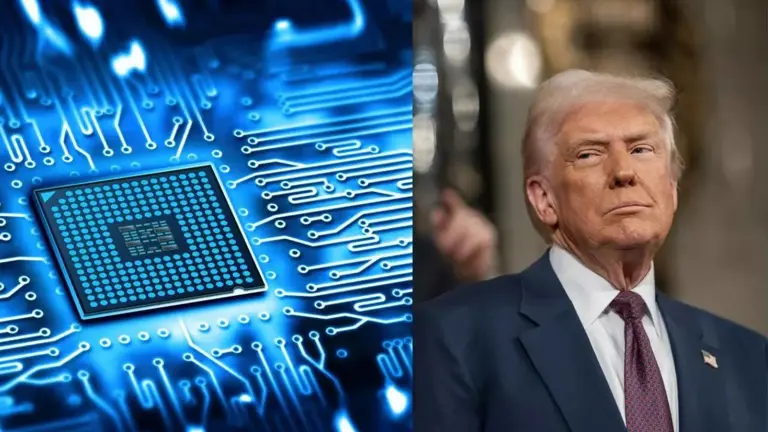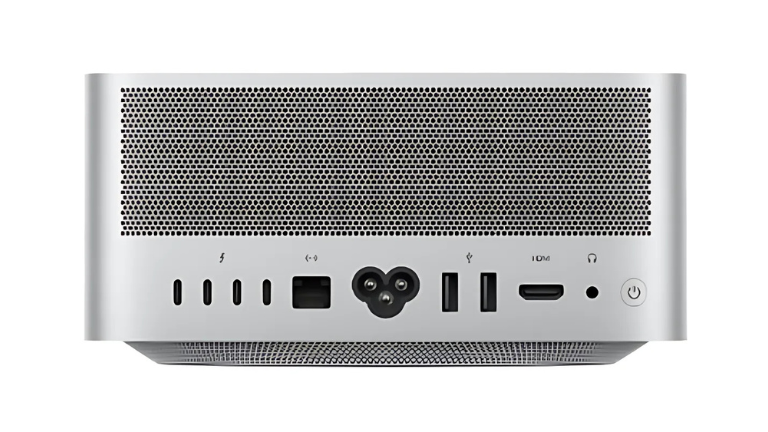India’s Electronics Industry Faces Uncertain Future as Trump’s Tariff War Escalates
As former U.S. President Donald Trump doubles down on aggressive trade policies, the India electronics industry finds itself at a pivotal moment. On March 5, Trump announced new reciprocal tariffs targeting India, China, and other key trade partners, declaring:
“Whatever they tariff us, other countries, we will tariff them. That’s reciprocal, back and forth.”
These policy shifts could disrupt India’s ambitions of becoming a global electronics manufacturing powerhouse, raising concerns across industries reliant on U.S. trade.
What’s at Stake for India’s Electronics Sector?
The India electronics industry currently exports $30 billion worth of electronics, with smartphones contributing nearly 60% of that figure. Among these, Apple’s iPhone production dominates, accounting for two-thirds of exports.
However, the introduction of reciprocal tariffs on U.S.-bound exports could derail India’s growth trajectory in electronics manufacturing, significantly impacting its ability to compete on the global stage.
Industry Experts Sound the Alarm
📉 Market research executive Anurag Agrawal, CEO of Techaisle, warns:
“India’s position as an emerging global manufacturing hub faces imminent challenges and potential long-term disruptions. The smartphone sector stands to be the most significantly impacted by these tariff policies.”
India’s government has strategically promoted domestic smartphone production through the Production-Linked Incentive (PLI) scheme, which offers manufacturers incentives of 4–6% for local production. Apple has been one of the biggest beneficiaries of this scheme since its launch in 2020.
However, there’s a looming issue:
- The PLI scheme expires in 2026.
- Combined with new U.S. tariffs, India’s cost advantage in smartphone production could diminish significantly.
This has sparked concerns over India electronics industry’s long-term competitiveness, especially as Vietnam, Thailand, and Mexico aggressively attract investment in electronics manufacturing.
Could India Still Benefit from the Trade War?
While many analysts are worried about the impact of tariffs, some believe the India electronics industry could gain an advantage as companies seek alternatives to China.
📈 Lori Chang, a senior analyst at Taiwan-based Isaiah Research, sees an opportunity:
“Beyond the relocation of assembly plants from China, major component assembly—including camera modules and battery cells—has seen increasing investment in India to achieve a supply chain clustering effect.”
Apple’s Expanding Investment in India
🍏 Apple is already expanding its production footprint in India, including:
✔ Increased iPhone production for export markets.
✔ AirPods manufacturing ramp-up.
✔ A planned iPad production line by 2025.
However, despite this growth, the India electronics industry still faces critical hurdles:
- Workforce training gaps
- Infrastructure limitations
- Complex labor laws
Without addressing these issues, India risks losing its status as a preferred alternative to China.
Semiconductors: A Wake-Up Call for India?
The India electronics industry is thriving, but when it comes to semiconductors, the country lags behind major global players like Taiwan, South Korea, and China.
Now, Trump’s proposed 25% tariff on semiconductor imports has intensified concerns over India’s reliance on foreign chips.
Industry Leaders Push for Local Semiconductor Development
⚡ Ajai Chowdhry, co-founder of HCL and chairman of EPIC Foundation, calls this a critical moment for India:
“Having a robust domestic market serves as a shock absorber, especially in turbulent geopolitical situations such as this.”
📌 Chowdhry advocates for India to prioritize the manufacturing of at least 15 key semiconductor chips to:
✔ Reduce dependence on imports
✔ Enhance national security
✔ Strengthen India’s position in global electronics manufacturing
With global semiconductor demand expected to skyrocket in the coming years, the India electronics industry must accelerate investments in local chip production to remain competitive.
India’s Trade Strategy: How Can It Protect Its Electronics Industry?
As tariffs create economic uncertainty, Indian trade groups are urging proactive measures to safeguard the India electronics industry.
🏛 The India Cellular and Electronics Association (ICEA) has called for the removal of import duties on U.S. electronics, particularly smartphones and consumer gadgets, to:
✔ Prevent retaliatory tariffs from the U.S.
✔ Keep India’s electronics exports competitive
✔ Encourage deeper economic cooperation with U.S. markets
📢 ICEA Chairman Pankaj Mohindroo has raised concerns, warning:
“If we don’t address the reciprocal tariff challenges, it can severely impact our electronics manufacturing aspirations and lead to the shift of large Global Value Chains (GVCs) from India to other favorable destinations.”
To protect its position, India must:
✔ Negotiate lower tariffs with the U.S.
✔ Strengthen domestic semiconductor production
✔ Enhance investor-friendly policies to attract global manufacturers
✔ Ensure long-term incentives for smartphone and chip production
Failing to act swiftly could see major investments shift to Vietnam, Thailand, and Mexico, putting the India electronics industry at risk.
The Bigger Picture: Global Trade Realignments
While India struggles with trade uncertainty, the global trade landscape is shifting—and not necessarily in Washington’s favor.
🌍 Nigel Green, CEO of deVere Group, believes the U.S. is making a strategic miscalculation:
“While the U.S. plays political games with tariffs, other nations are striking deals, forging alliances, and creating new economic frameworks that don’t depend on Washington.”
🔍 Some key global trade shifts include:
✔ China, Europe, and post-Brexit UK strengthening economic ties.
✔ ASEAN nations (Vietnam, Thailand, Malaysia) emerging as global manufacturing hubs.
✔ Middle Eastern and African markets diversifying supply chains to reduce dependence on the U.S.
India must decide quickly whether to align more closely with the U.S. or forge independent trade policies that give it a stronger foothold in global electronics production.
India Must Act Fast to Secure Its Competitive Edge
Trump’s reciprocal tariffs could severely disrupt the India electronics industry, but they also present a crucial moment for strategic decision-making.
📌 Key Takeaways:
✔ India’s $30B electronics exports, led by Apple, face serious risk due to tariffs.
✔ The expiration of the PLI scheme in 2026 could erode India’s cost advantage.
✔ India needs to invest in semiconductor manufacturing to reduce reliance on imports.
✔ Failure to act could see major electronics investments shift to Vietnam and Thailand.
With trade policies in flux, the India electronics industry must act swiftly to ensure its position as a global manufacturing leader remains intact.
🚀 How can India navigate this new trade war? The coming months will be critical.






